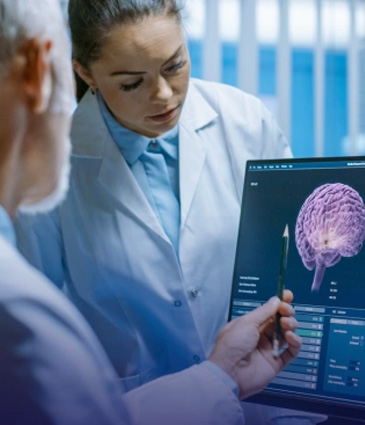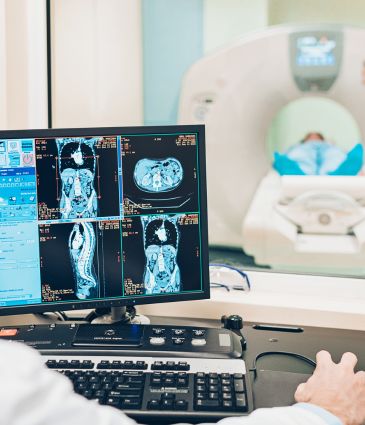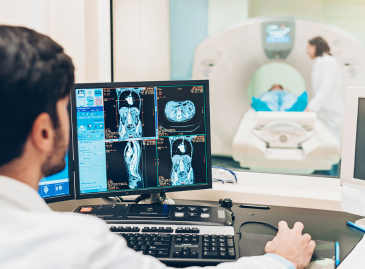
What is Brain Mapping?
Brain Mapping is a powerful imaging tool that helps doctors and scientists see how different parts of the brain work. Unlike a basic MRI that only shows brain structure, brain mapping provides detailed information about brain activity, function, and how different areas are connected. It combines data from advanced technologies like EEG, fMRI, PET, or MEG to create a complete picture of the brain in action. This technique is often used to understand, diagnose, and even plan treatment for neurological or psychological conditions. It’s also used in research to learn more about how the brain processes thoughts, emotions, movement, and memory.
Why Do People Get a Brain Mapping Scan?
There are many reasons someone may need Brain Mapping. One common reason is to help locate the source of seizures, tumors, or other brain disorders. For example, doctors use brain mapping to avoid damaging critical areas like speech or movement if a person is about to have brain surgery. It’s also used in people with memory issues, depression, learning difficulties, or unexplained symptoms like dizziness or personality changes. Specialists can make better diagnoses and build more effective treatment plans by seeing how the brain functions.
Types of Brain Mapping Techniques
Brain Mapping is not one single test; it's a combination of methods. Each one gives different information:
- EEG (Electroencephalogram) tracks electrical activity and is excellent for spotting seizures.
- fMRI (Functional MRI) shows which brain parts are active during a task.
- PET (Positron Emission Tomography) uses a small amount of radioactive tracer to show metabolic activity.
- MEG (Magnetoencephalography) captures magnetic fields from brain signals.
Your doctor will choose the most suitable method based on your condition and what they need to learn about your brain.
What Happens During a Brain Mapping Scan?
Most brain mapping procedures are non-invasive and painless, providing a comfortable experience for the patient. The process depends on the technology used, but generally, you’ll lie still on a bed while the machine collects data. In an EEG, small sensors are placed on your head to detect brain waves. For an fMRI or PET scan, you may be asked to perform simple tasks like moving a hand or thinking about something specific while the scanner records your brain’s response. Sessions usually last between 30 minutes and an hour. You don’t need to prepare much, though you might be asked to avoid caffeine or certain medications before the test.
Who Should Consider Brain Mapping?
Brain Mapping is commonly used in:
- People with epilepsy, brain tumors, or stroke
- Patients preparing for brain or spinal surgery
- Those experiencing memory loss or cognitive decline
- Individuals with behavioral or developmental disorders (e.g., autism, ADHD)
- People struggling with mood or emotional regulation
It’s also increasingly used in mental health to understand brain patterns in anxiety, depression, and trauma.
Benefits of Brain Mapping
The most significant advantage of Brain Mapping is that it shows not just where the brain may have a problem, but how that area is functioning. This helps doctors make more precise decisions. Other benefits include:
- Better diagnosis and treatment planning
- Early detection of severe conditions
- Personalized therapy for neurological or psychiatric disorders
- Non-invasive and often quick
For example, in epilepsy surgery, brain mapping helps surgeons avoid key areas that control language or movement. In mental health, it can help identify patterns linked to depression or PTSD.
Brain Mapping vs. Traditional Brain MRI
A regular MRI shows the brain’s physical structure, such as detecting tumors or bleeding. Brain Mapping, however, goes beyond structure to look at function. It reveals how well areas of the brain work, how they interact, and where communication may break down. Both scans often provide a complete picture of patients with complex conditions.
Concerns About Brain Mapping
While Brain Mapping is generally very safe, some people have a few concerns:
- Discomfort or anxiety: Some individuals may feel claustrophobic in an MRI or nervous with sensors on their head.
- PET scan tracers: PET scans use minimal radioactive tracers, but the exposure is minimal and considered safe for most people. Pregnant women may need to avoid it.
- Movement sensitivity: Since these scans are sensitive to movement, people who find it hard to stay still might have trouble with accuracy.
- Cost and access: Brain Mapping can be more expensive than standard scans and may not be available in every clinic.
Discussing these concerns with your doctor is always a good idea to determine which method is safest and most useful for you.
Brain Mapping in Turkey
Turkey is becoming a popular destination for advanced imaging and diagnostic services, including Brain Mapping. The country offers high-quality medical care at more affordable prices than in many Western nations. At Istanbul Med Assist, we work with leading neurology centers to provide personalized brain mapping options with modern technology.
Final Thoughts
Brain Mapping is a breakthrough tool that gives us a deeper look into how the brain works. Whether you’re facing a neurological issue, preparing for surgery, or just looking for answers to long-standing symptoms, this scan can provide essential insights that regular imaging might miss. If you're considering Brain Mapping, consult a neurologist or medical specialist to learn more. The earlier you understand your brain, the better your chances of finding the proper treatment and taking control of your health







